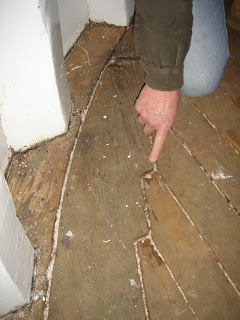Bilge Keels and Romance
 We met a chap in Fort Augustus on the way through the canal, a man called Dick, who is a chef. He had taken a converted Scottish trawler to the Mediterranean and the main bit of advice he gave us was to fit bilge keels, so we have done just that. Also, his advice was not to fall in love with anyone who wasn’t as mad about boats as you are because they will make you sell the boat, and give up your dream, and cause you to go back to Inverness to work in an oven-like basement for 14 hours a day …
We met a chap in Fort Augustus on the way through the canal, a man called Dick, who is a chef. He had taken a converted Scottish trawler to the Mediterranean and the main bit of advice he gave us was to fit bilge keels, so we have done just that. Also, his advice was not to fall in love with anyone who wasn’t as mad about boats as you are because they will make you sell the boat, and give up your dream, and cause you to go back to Inverness to work in an oven-like basement for 14 hours a day …Anyway, our bilge keels were bespoken by our naval architect at 7m long and about 10” blades; we hope that this will cut out some of the roll, in case we ever get caught again outside a port, such as Buckie, in a blow, with no way of finding our way in, at least we'll be able to stand up to read the charts and use the bogs next time.


The hull has been totally re-caulked, and has its first layer of putty in over the caulking, which will need smoothing and then a second application of putty. There is still some fairing of the hull to do, and filling of smaller dinks and dents, although we will never get a cake-icing finish.
The most obvious change on the deck is that all the old paint around the gunwales has gone, and it is
 now a gentle white, and as you can see has brightened the whole area around the edge of the deck. No wood needed to be replaced here, some filler, and the timbers worn smooth and dented over the decades by ropes and nets is still apparent, which keeps the character.
now a gentle white, and as you can see has brightened the whole area around the edge of the deck. No wood needed to be replaced here, some filler, and the timbers worn smooth and dented over the decades by ropes and nets is still apparent, which keeps the character.
The deck has begun to be re-caulked and has reached 1/3 of the way back from the pointy end but is on pause because there is too much else going on. We are planning to use Sikaflex (in black) rather than pitch because, if we ever get to the Mediterranean, then
 it won’t melt.
it won’t melt.For the most patient and virtuous reader who remembers my fondness for the filthy old Lister generator, and how incredibly useful it was when all other power failed, there is a little update.
The Lister was air-cooled so whenever we started it, and so old that smoke shot in every direction, which made the engine room's atmosphere close and difficult to see to walk about in; a previous owner had fixed a 24v alternator from a car or lorry, onto the top of the Lister, with superglue or something, and the generator was joined to the engine with fan belts which didn’t really line up, and although the whole thing was a rusty, deafening smoke-machine it did get us out of trouble more than once in the long voyage.

We binned the old small keel-cooler which was just for running the refrigeration for the fish-hold, but it was not big enough anyway to cool any serious new generator. Sadly the Lister had to go, and not without a tear from the crew, it must be admitted. (The other generator, a 240v close-coupled thing never worked and was rotten) So we are starting from new with power generation.
We have decided to order a second keel cooler for the generator, and I have overheard the Skipper on the phone trying to find another, but water-cooled Lister for me. This is beyond romantic, I can’t wait to see it and I wonder if he’ll wrap it for me…






